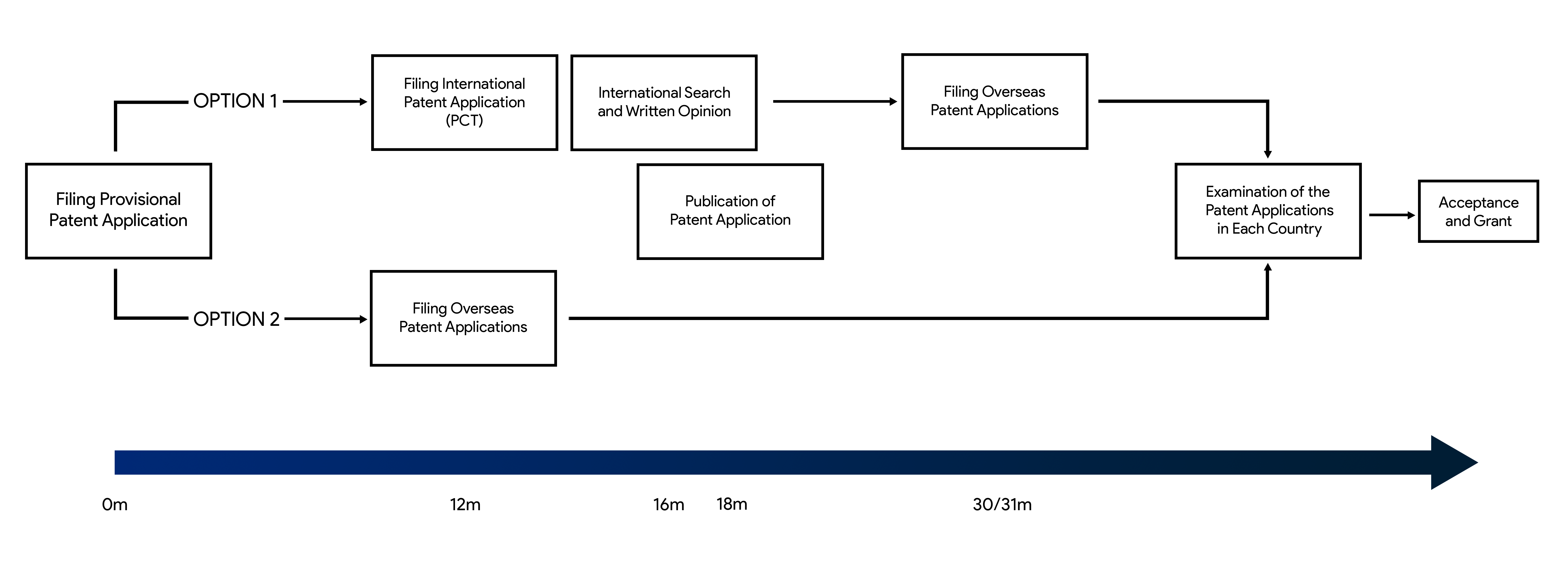How to protect your invention and
ideas
Patents provide a temporary monopoly of up to 20 years. This monopoly gives you the right to exclude others from making, selling, using or importing the invention covered in the patent. In return, you have the obligation to fully describe the invention to the public in a patent document.
Unlike copyright, patents are not automatic and must be applied for at the Patent Office in each country where protection is desired.
There are two main requirements for an invention to be patentable:
The most important requirement for a patentable invention is whether the invention is new. Novelty is assessed by checking whether the invention has been used or published before the filing date. This includes any published documents such as patents, scientific papers and the content on a website. Furthermore, it also includes a verbal publication, for example a presentation or discussions with potential business partners and VCs. It is therefore important to keep your invention a secret and to use confidentiality agreements whenever necessary.
Some countries including Australia offer a “grace period” of 12 months. As such, even if the invention has been published, this publication may be disregarded to obtain a granted patent.
The second requirement is whether the invention is obvious. In this regard, the invention is compared with previous technologies and inventions. This requirement is applied differently in each country and typically involves assessing whether a person skilled in the field of the invention would consider the invention as obvious.
Inventiveness is highly subjective and can be difficult to assess. We are happy to advise you in this regard when we discuss your invention in more detail.
The patenting process typically starts with filing a provisional patent application which is valid for 12 months. Filing a provisional patent application gives you a filing date which will later be used to assess the novelty and inventiveness requirements.
Once the provisional patent application has been lodged, the invention can be discussed in public without invalidating the patent. However, we would typically advise our clients to only disclose as much as necessary.
After 12 months, there are a number of options how to continue with the patent protection. For example, you can file overseas applications, an International PCT application, a standard Australian application or an Australian innovation patent. The best option is usually driven by a commercial decision and depends on a number of factors, such as further developments, commercial activities and financial considerations.
It is important to understand that a patent application does not provide you with legally enforceable rights until the patent is granted. This process can take several years and involves examination of your patent document by an Examiner at the Patent Office in each country.
However, should you become aware of a potential infringer, there are ways to accelerate this process. We could also look at using other strategic tools to strengthen your IP position. Please feel free to contact us for a more in-depth discussion about how to deal with potential infringement of your invention.


*This flow chart shows some of the main steps in a successful patenting process starting with filing a provisional patent application in Australia. For further details and options, please contact Northern Lights IP
2024 Copywright – Northern Lights IP | Web Design & SEO By Refined IT